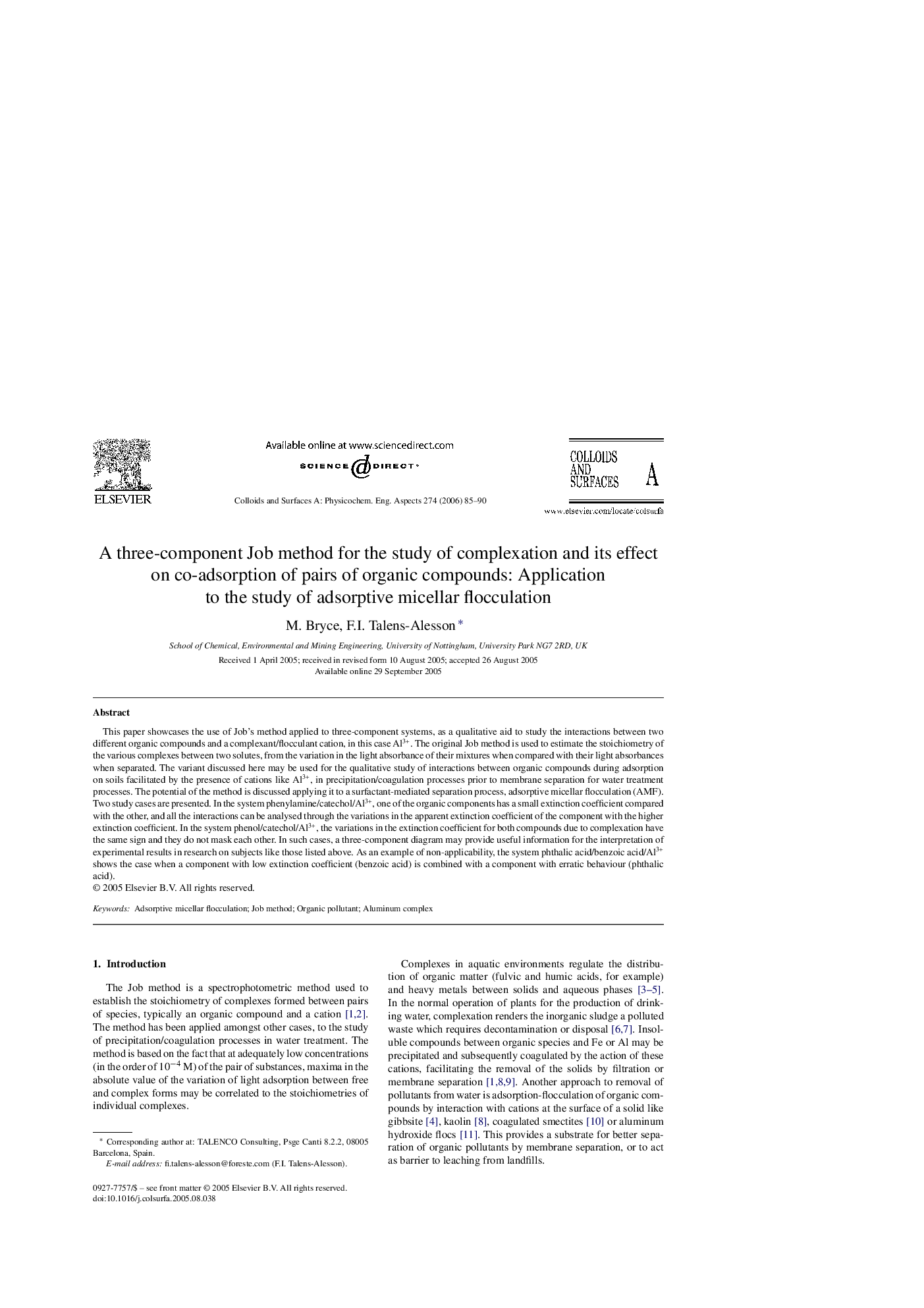| Article ID | Journal | Published Year | Pages | File Type |
|---|---|---|---|---|
| 598544 | Colloids and Surfaces A: Physicochemical and Engineering Aspects | 2006 | 6 Pages |
This paper showcases the use of Job's method applied to three-component systems, as a qualitative aid to study the interactions between two different organic compounds and a complexant/flocculant cation, in this case Al3+. The original Job method is used to estimate the stoichiometry of the various complexes between two solutes, from the variation in the light absorbance of their mixtures when compared with their light absorbances when separated. The variant discussed here may be used for the qualitative study of interactions between organic compounds during adsorption on soils facilitated by the presence of cations like Al3+, in precipitation/coagulation processes prior to membrane separation for water treatment processes. The potential of the method is discussed applying it to a surfactant-mediated separation process, adsorptive micellar flocculation (AMF). Two study cases are presented. In the system phenylamine/catechol/Al3+, one of the organic components has a small extinction coefficient compared with the other, and all the interactions can be analysed through the variations in the apparent extinction coefficient of the component with the higher extinction coefficient. In the system phenol/catechol/Al3+, the variations in the extinction coefficient for both compounds due to complexation have the same sign and they do not mask each other. In such cases, a three-component diagram may provide useful information for the interpretation of experimental results in research on subjects like those listed above. As an example of non-applicability, the system phthalic acid/benzoic acid/Al3+ shows the case when a component with low extinction coefficient (benzoic acid) is combined with a component with erratic behaviour (phthalic acid).
